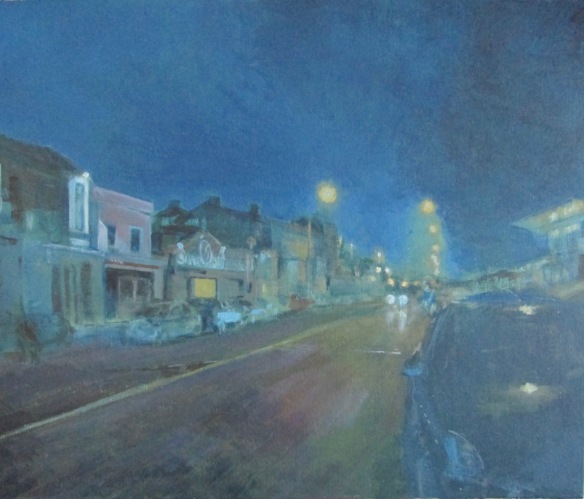
Up until the mid nineteenth century, Bray seafront was a stony beach stretching between Bray Head and a craggy outcrop a mile to the north on which sat a Martello Tower. The crag overlooked a small dock and the Dargle River opening into the sea. In the 1850s the Dublin to Wexford railway line passed along the shoreline and this ultra modern mode of transport enabled many more people to live here by the seaside. Strand Road was developed with fine Victorian houses, the sea was pushed back and the Esplanade established as a long linear parkland. The Promenade, atop the sea wall, completed the picture in the 1890s. Not all that much has changed over the intervening century.

The seafront is Bray’s principal attraction for visitor and resident. Throughout the year, but especially in summer, people come for all the fun of seaside entertainment. They throng to the summer carnival, the various outdoor gigs and events, the amusements, the bars, cafes, icecream parlours and restaurants. Or they take a walk along the Promenade or up Bray Head, or just sit on the beach or the Esplanade. This is what people do, crowds of them, together and all alone.

Our present phase of isolation has robbed us of this fun, but our time will come round again. This is what people do. I’m fortunate in that I’m a Bray resident, and live within the distance parameters of the seafront, and indeed the Cross at the top of Bray Head. I’ve been familiar with this joint since coming here for holidays in 1963. As Gerry and the Pacemakers said at the time: I Like It!
I like it, I like it,
I like the way you run your fingers through my hair
And I love the way you tickle my chin
And I like the way you let me come in
when your Momma’s not there.

The particular stretch of the seafront which I’ve painted has proven a happy hunting ground for me too. The block of buildings to the left featured in one of my first short stories, called Coda. It won the Bray People short story competition and was the opener for my first collection Blues Before Dawn. It’s a macabre story featuring a couple of musicians, one an Italian running a seafront chipper, the other, the narrator, a bit of a psychopath. In the eighties, the Fun Palace stood where the Silver Strand is, and I borrowed that name for the regular spot where our heroes played. There was also a small Italian chipper, extreme left, which featured too. As for the Fun Palace, the old facade, like the Silver Strand but with timber cladding, was immortalised in an illustration I did. It featured in my first art exhibition in the Bank of Ireland on Main Street. It was the only artwork that sold. I wonder where it resides now.

Further on, perspective lines converge on what we call The Dug Inn. Mick Duggan’s pub has been through a few name changes since, most notably Katie Gallagher’s. Still in the family, who run a couple more Bray licensed premises, it now has three names: The Box Burger, Platform Pizza and the Ocean. Just beyond, the Hibernia was once a gig hotspot known as The Mississippi Rooms. It still runs folk music gigs midweek.

Looking to the right hand side, you’ll see the shape of Killiney Head beyond the lights of the Promenade. Nearby, to the right, the modern complex that holds the Bray Sealife Centre. Established in the eighties, it was originally a rather lumpy granite clad modernist structure. It was later recast as a sleek postmodern pavilion. The gastrobar visible here, was originally known as the Barricuda, and now houses Butler and Barry’s. The upstairs area features a glass wall along the eastern side giving fabulous sea views.
Behind me is the central Esplanade and there are many more fine bars facing onto that. Where to go, where to go? I’m gumming for a pint. Only 91 days, 21 hours and eighteen minutes remaining as of Sunday at two o’clock.

